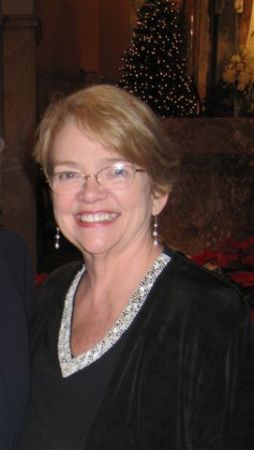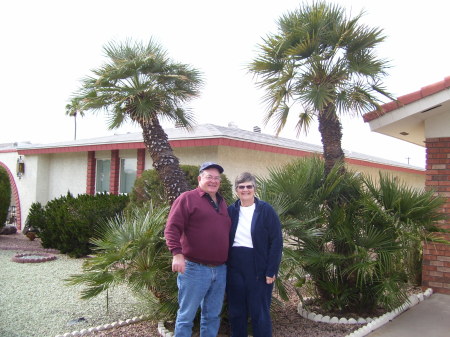Sandra L Jacobson
age ~64
from Ridgefield, WA
- Also known as:
-
- Sandra L Dalton
- Sandra Lee Dalton
- Sandra L Tulacz
- Phone and address:
- 2904 S Cornett Dr, Ridgefield, WA 98642
Sandra Jacobson Phones & Addresses
- 2904 S Cornett Dr, Ridgefield, WA 98642
- Vancouver, WA
- Vista, CA
- Newberg, OR
- Portland, OR
- San Diego, CA
- Tualatin, OR
Us Patents
-
Cellulosic Enzyme Recycling From Separation Of Saccharified Biomass
view source -
US Patent:20230104032, Apr 6, 2023
-
Filed:Sep 30, 2022
-
Appl. No.:17/957633
-
Inventors:- Visalia CA, US
Sandra Jacobson - El Cajon CA, US
Kris Ramos - Sanger CA, US
Prachand Shrestha - Visalia CA, US -
Assignee:Edeniq, Inc. - Visalia CA
-
International Classification:C12P 19/14
C13K 13/00
C07H 3/04
C12P 19/12
C12P 19/02
C13K 1/02
C12P 7/10 -
Abstract:The present disclosure provides methods for generating sugars from a cellulosic biomass. The methods combine treatment of the biomass using a high-shear milling device and saccharification of the biomass to partially hydrolyze the biomass. The biomass can be saccharified either after or simultaneously with the high-shear milling treatment. The partially hydrolyzed biomass is then separated into a solids stream with saccharification enzymes, and a liquid stream with sugars. The solids stream and associated enzymes are further incubated under saccharification conditions to produce additional sugars, or are recycled and added to fresh biomass, which is saccharified under high-shear milling conditions. The methods result in improved conversion of cellulosic biomass to glucose.
-
Cellulosic Enzyme Recycling From Separation Of Saccharified Biomass
view source -
US Patent:20190276865, Sep 12, 2019
-
Filed:Mar 21, 2019
-
Appl. No.:16/360408
-
Inventors:- Visalia CA, US
Sandra Jacobson - El Cajon CA, US
Kris Ramos - Sanger CA, US
Prachand Shrestha - Visalia CA, US -
International Classification:C12P 19/14
C13K 1/02
C07H 3/04
C12P 19/12
C12P 7/10
C13K 13/00
C12P 19/02 -
Abstract:The present disclosure provides methods for generating sugars from a cellulosic biomass. The methods combine treatment of the biomass using a high-shear milling device and saccharification of the biomass to partially hydrolyze the biomass. The biomass can be saccharified either after or simultaneously with the high-shear milling treatement. The partially hydrolyzed biomass is then separated into a solids stream with saccharification enzymes, and a liquid stream with sugars. The solids stream and associated enzymes are further incubated under saccharification conditions to produce additional sugars, or are recycled and added to fresh biomass, which is saccharified under high-shear milling conditions. The methods result in improved conversion of cellulosic biomass to glucose.
-
Polymers In Biomass Saccharification Bioprocess
view source -
US Patent:20160160252, Jun 9, 2016
-
Filed:Jul 24, 2014
-
Appl. No.:14/907212
-
Inventors:- Visalia CA, US
Sandra Jacobson - El Cajon CA, US
Kristoffer Ramos - Sanger CA, US
Mrugesh Patel - Norton VA, US
James Kacmar - Visalia CA, US
Daniel Michalopoulos - Exeter CA, US -
International Classification:C12P 19/14
C12P 19/02
C08F 126/10
C08F 116/06
C08G 65/08
C08G 65/34 -
Abstract:Methods and systems for increasing the yield of sugars from a biomass, such as a lignocellulosic biomass, are described. A non-ionic organic polymer is contacted with the biomass during the saccharification reaction, and the hydrolyzed mixture is separated using a filter into a permeate and a retentate, where the non-ionic organic polymer is present in the retentate. The retentate with the polymer is recycled to the hydrolysis mixture, which increased the yield of sugars using less saccharification enzymes. The methods thus allow for increased cost savings by reducing the amount of enzymes required to convert the biomass to sugars.
Name / Title
Company / Classification
Phones & Addresses
Algenic Biofuels, LLC
Bio Research
Bio Research
3830 Vly Ctr Dr, San Diego, CA 92130
Isbn (Books And Publications)

Resumes

Sandra Jacobson
view source
Sandra Jacobson
view source
Sandra Jacobson
view source
Sandra Jacobson
view source
Sandra Jacobson
view source
Sandra Jacobson
view sourceLocation:
United States

Sandra Jacobson
view sourceLocation:
United States
Medicine Doctors

Sandra Ann Jacobson
view sourceSpecialties:
Psychiatry
Geriatric Psychiatry
Psychosomatic Medicine
Child & Adolescent Psychiatry
Geriatric Medicine
Clinical Neurophysiology
Geriatric Psychiatry
Psychosomatic Medicine
Child & Adolescent Psychiatry
Geriatric Medicine
Clinical Neurophysiology
Education:
University of Hawaii (1987)
Googleplus

Sandra Jacobson
Work:
Marion EyeCenters - Insurance Verifier (2010)
Education:
East Aurora High School, University of Phoenix - HealthCare Administration

Sandra Jacobson
Education:
Shadle Park High School, Spokane Wa. first graduating class. majored in art and English.
About:
I am in the latter stages of my life. I am fortunate to have lived a long life, with many people I love and who love me. I am enjoying a new relationship with my Lord. I feel so much love in my heart....
Tagline:
I am older. I love art, books, music, my daughters Teri and Kristi, my longtime love, Larry, and animals.
Bragging Rights:
I won an award in high school for a regional exhibition in art, held in Seattle. I also won a scholarship to an art school. I had many people who believed in me. To exscape an alchoholic home, I married at 17 and gave up my art. This was the greatest poor choice of my young life.

Sandra Jacobson

Sandra Jacobson
Plaxo

sandra jacobson
view sourceYoutube
Classmates

Sandra Ward (Jacobson)
view sourceSchools:
Byford Elementary School Chicago IL 1946-1954
Community:
William Bill, Darryl Simpson, Gerald Braasch, Gerry Armin

Sandra Christensen (Jacob...
view sourceSchools:
Elgin High School Elgin ND 1956-1960
Community:
Jerry Hintz, Delbert Tibke, Randy Zimmerle

Sandra Jacobson (Holm)
view sourceSchools:
Elk Mound High School Elk Mound WI 1985-1989
Community:
Annette Linberg, Brenda Mueller

Sandra Heberling (Jacobson)
view sourceSchools:
Racine County High School Rochester WI 1953-1957
Community:
Anthony Raasch, Shelby Bucholtz, Joseph Villalpando, John Heise

Sandra Jacobson
view sourceSchools:
Hermes Elementary School Aurora IL 1986-1989, Simmons Junior High School Aurora IL 1989-1991
Community:
Heather Curry, Ardith Walthers, Joel Gimpel, Tom Braaten

Sandra Jacobson (Delahunt)
view sourceSchools:
Burlington-Edison High School Burlington WA 1963-1967
Community:
Tim Wisinger, Greg Visten, Lynn Sullivan

Sandra Jacobson (Kubicek)
view sourceSchools:
Williams Elementary School Columbus NE 1966-1970, Field Elementary School Columbus NE 1970-1973, Columbus Middle School Columbus NE 1973-1976
Community:
Katherine Clay, Lisa Jenny, Ann Zastera, Aimee Michener, Bill Jenkins, Jerry Wilgocki, Lori Gonka, Susan Schroeder

Sandra Jacobson (Borson)
view sourceSchools:
Foam Lake Composite High School Foam Lake Afghanistan 1976-1980
Community:
Jim Anderson, Bev Slowski, Arni Goodman, Lynda Dobson

Sandra Scott Jacobson
view source
Sandra Jacobson
view source
Sandra Jacobson
view source
Sandra Jacobson
view source
Sandra Jacobson
view source
Sandra Jacobson
view source
Sandra Jacobson
view source
Sandra Jacobson
view sourceGet Report for Sandra L Jacobson from Ridgefield, WA, age ~64





